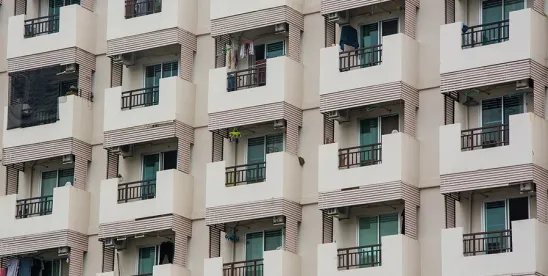Governor Maura Healey has called out housing as Massachusetts’ biggest challenge—both increasing the pace of production and lowering the cost of living. Given projections that the Commonwealth will absorb 610,000 new households between 2010 and 2040, the administration is targeting 20,000 new housing units annually through 2040, of which 4,000 would be affordable to households making up to 80% of the area median income.
In part, this is a story about (in Greater Boston math) households needing at least $300,000 of annual income to afford the median single-family home price of $900,000, even though the median income is $100,000. When income-restricted homeownership options become available, the potential buyer queues are long. For example, one recent editorial noted “more than 1,000 people bid to be among 12 future homeowners” in the first phase of a Holyoke Housing Authority project delivered in the summer of 2023. This acceptance rate (1.2%) is more selective than Harvard University admissions (4.6%). Today, homeownership is elusive.
The bigger story may be that all types of housing are needed—not just single-family homes. When housing production in Massachusetts peaked in the 1970s, the yearly pace was 30,000 new units split equally between single-family and multi-family. By the 2010s, the yearly pace dropped well below the administration’s current target of 20,000. Even still, half of those units were delivered in multi-family buildings, which format carried its fair share of the weight of housing production despite a backdrop of zoning prohibitions that limit available sites for denser forms housing development. What does that backdrop look like? Most of Greater Boston’s cities and towns allow only single-family homes (i.e., prohibit other types of housing) on 80-90% of their land area.
The recent adoption of the Massachusetts Bay Transportation Authority (MBTA) Communities Act begins to address such apartment bans by requiring zoning changes that accommodate denser housing near transit. The Boston Globe recently painted a picture of how it’s going in a headline: “'It’s an invasion.' In towns across Eastern Mass., resistance grows against ambitious state housing law.” One community group is organizing opposition with materials that warn of “THE DOWNFALL OF SINGLE FAMILY HOMES—BYE BYE SMALL TOWN CHARM, HELLO MINI CITY.”
This sentiment has underpinned zoning from its start. The oft-quoted Supreme Court decision that affirmed zoning in 1926 clarified that the point of zoning is to enable neighborhoods of single-family homes to keep other land uses out, including other types of housing. Back then, apartments were seen as a slippery slope to residential decline. With their coming, “the residential character of the neighborhood and its desirability as a place of detached residences [is] utterly destroyed.” Today, that argument is finding expression in opposition to the MBTA Communities Act—from community groups as noted above, to a town’s Select Board letter to the Governor forecasting “the destruction of the small-town New England charm we’ve come to love.”
It's worth questioning the assumption that apartments are anti-residential, given that apartments actually are residences. In the early 1900s, the public discourse was clouded with asides on patriotism and race, as in these examples cited in Maureen E. Brady’s 2021 Harvard Law Review article, “Turning Neighbors Into Nuisances”:
- “[T]hat profound and dependable patriotism which is necessary to preserve and maintain an ideal government like ours could [not] survive the lapse of time crowded into apartments.” City of Jackson v. McPherson (1932).
- “[W]e must concede that the apartment house has a destructive effect upon the [White] birth-rate, and a tendency to race suicide.” Morris v. City of East Cleveland (1919).
So the concerns were not limited to emergency response, noise, traffic, and sanitation, which are solvable. If historical housing production in the 1970s and 2010s was half multi-family with just leftovers of land to work with and the headwinds of stigma, what pace of production would flow from a fulsome embrace of new apartment buildings? There’s no path to single-family-homing our way out of housing scarcity. The Commonwealth’s households need more apartments to move into. Now would be a good time to lift the stigma against them.
Director David Linhart was recently sworn in as a member of the Massachusetts Commission on Unlocking Housing Production, established under Executive Order No. 622, and tasked with “delivering a report to the Governor and Lieutenant Governor on how state and local laws, regulations, and practices could be revised so as to increase the supply of housing that is affordable across a wide range of incomes and available throughout a broad spectrum of neighborhoods.”
This post expresses the views of the author and not the official policy or position of the Commission.




 />i
/>i

